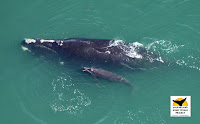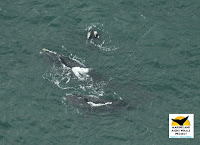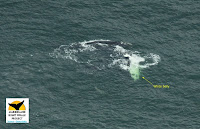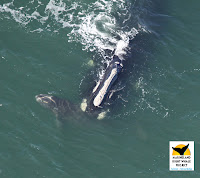
Right whale female #2430, also known as Minus One, and her calf appeared in the nearshore waters of Marineland yesterday and provided a great opportunity for observation. Several calls reporting her presence came into our office nearly simultaneously, from Marine Resources Council relaying a call from the hotline and from Mobile team 2. The timing was near perfect. The AirCam was just beginning its survey from Matanzas Inlet and received the information via radio. In less than 15 min. we were circling over the pair for identification photos.
Minus One and calf drifted south over the course of the day, remaining relatively close to shore. Our last call came around 6:15 pm. They were directly off Moody Blvd. in the Hammock.
We last saw these two exactly one week before, on 20 January. At that time, they were in the New Smyrna Beach area.
Minus One and calf drifted south over the course of the day, remaining relatively close to shore. Our last call came around 6:15 pm. They were directly off Moody Blvd. in the Hammock.
We last saw these two exactly one week before, on 20 January. At that time, they were in the New Smyrna Beach area.








